Did you know that recent studies estimate over 20 million people worldwide regularly practice self-hypnosis at home for stress relief, weight loss, and behavior change? The secret isn’t magic – it’s science. Whether you want to conquer chronic pain, fall asleep faster, or break negative thought patterns, self-hypnosis techniques can empower you to take charge of your subconscious mind, right from your living room.
Unlocking the Power of Self-Hypnosis at Home: Revealing the Potential Benefits
The potential benefits of self-hypnosis at home extend far beyond mere relaxation. By using targeted hypnotic suggestion, you can reframe unhelpful thoughts and achieve your goals for better health, mental health, weight loss, and more. In recent years, self-hypnosis at home has gained popularity as a free, accessible way to manage everyday stress, pain relief, insomnia, and even chronic pain—without requiring expensive hypnosis sessions with a trained hypnotist or certified hypnotherapist.
What sets self-hypnosis at home apart? Unlike a stage hypnosis show, this practice puts you in control, allowing you to enter a hypnotic trance or relaxed state specifically tailored to your needs. Whether you have a hard time falling asleep, want to boost your self-confidence, or need support for weight loss and healthy behavior change, self-hypnosis at home harnesses the natural power of your subconscious mind. With consistent practice, the positive change you seek becomes not just possible but probable.
A Surprising Statistic: How Many People Successfully Practice Self-Hypnosis at Home?
According to recent healthcare surveys, over 60% of individuals who attempt self-hypnosis at home report measurable improvements in at least one aspect of their well-being, such as reduced anxiety, improved sleep, or greater pain relief. This demonstrates a growing appetite for self-care tools that are easy to integrate into everyday life.
"A growing body of research supports the effectiveness of self-hypnosis at home for anxiety, pain, and behavioral change." — Certified Hypnotherapist
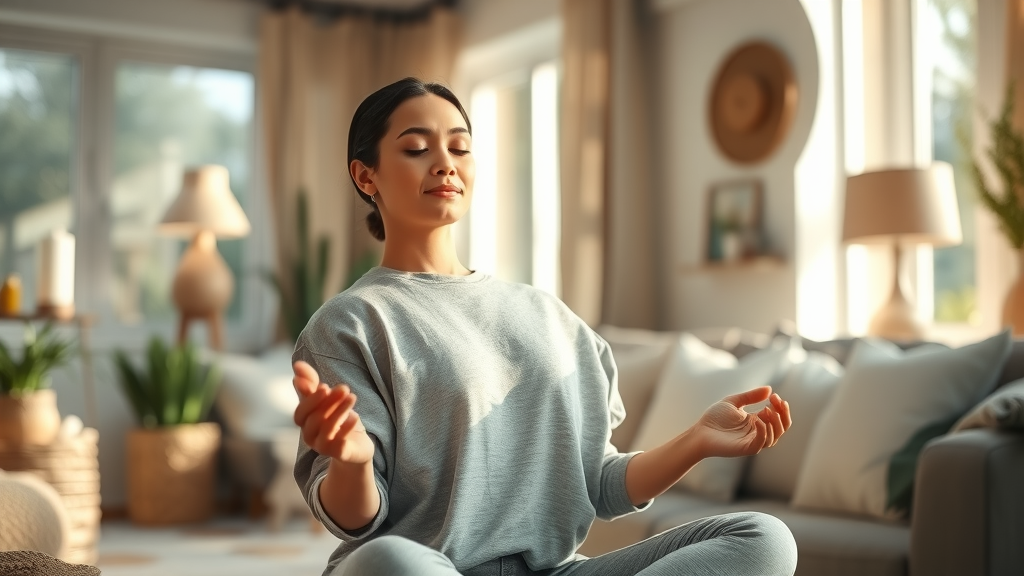
What You'll Learn About Self-Hypnosis at Home
The science behind self-hypnosis at home
Essential hypnosis techniques for beginners
Step-by-step instructions for achieving trance
Hypnotic suggestions tailored to your goals
Common pitfalls and safety considerations
How self-hypnosis at home compares to professional hypnotherapy
Understanding Self-Hypnosis at Home: Definitions and Common Misconceptions
What is Self-Hypnosis at Home?
Self-hypnosis at home is a self-directed process where you use focused concentration, relaxation, and hypnotic suggestions to enter a relaxed state—commonly called a hypnotic trance—in a setting of your choice. Unlike hypnosis sessions with a certified hypnotherapist, self-hypnosis puts the power in your hands to change negative thoughts or behavior patterns. This safe, natural state allows you to bypass the conscious mind and communicate directly with your subconscious to support positive change, whether you want to break a bad habit, improve sleep, or manage chronic pain.
Self-hypnosis is not about losing control or being manipulated as often depicted in a hypnosis show. Instead, it involves taking deliberate steps to guide yourself into a receptive, focused state where hypnotic suggestion can help reprogram unhelpful thought patterns. Many people use self-hypnosis at home to complement ongoing professional therapy or hypnosis sessions, especially when dealing with complex mental health issues or persistent health concerns.

Debunking Myths: Separating Fact from Fiction
There are several misconceptions surrounding self-hypnosis at home. Firstly, you cannot be forced to do anything against your will in a hypnotic state. Hypnosis relies on the willingness and active participation of your conscious and subconscious mind. Another common myth is that only a professional can effectively induce trance; in truth, self-hypnosis techniques empower individuals to use their own intent to achieve a relaxed state anytime, anywhere. Finally, some believe that hypnosis at home is only for mental health issues or pain relief, but its potential benefits expand to personal growth, breaking negative thought cycles, boosting focus and productivity, and supporting weight loss.
By debunking these myths, more people feel empowered to try self-hypnosis at home to address a hard time falling asleep, chronic pain, or even negative thoughts and emotions that create barriers to positive change. Understanding that you remain in control and that the science behind hypnotic suggestion is robust helps overcome skepticism and unlock the true power of this practice.
The Science Behind Self-Hypnosis at Home
How Hypnotic Suggestion Works
At the heart of self-hypnosis at home lies the concept of hypnotic suggestion. Through calming language and focused attention, you guide yourself—your conscious and subconscious mind—toward a specific intent or behavioral change. This isn’t about mind control; rather, it’s about using targeted wording and visualization to prompt the subconscious to adopt new, more constructive thought patterns. During a self-hypnosis session, your brain enters a relaxed, receptive state in which hypnotic suggestions become much more powerful, helping to override negative thoughts and reinforce positive behaviors.
Scientific studies, using brainwave scans and functional MRI imaging, show that hypnosis can alter brain activity—enhancing connectivity between areas responsible for attention, emotion, and self-reflection. This heightened state of focus enables the mind to accept hypnotic suggestions for stress relief, weight loss, or healthier habits with greater ease than in ordinary wakefulness. Because the process is self-directed, you can customize these hypnotic techniques for your personal needs, making self-hypnosis at home exceptionally versatile.
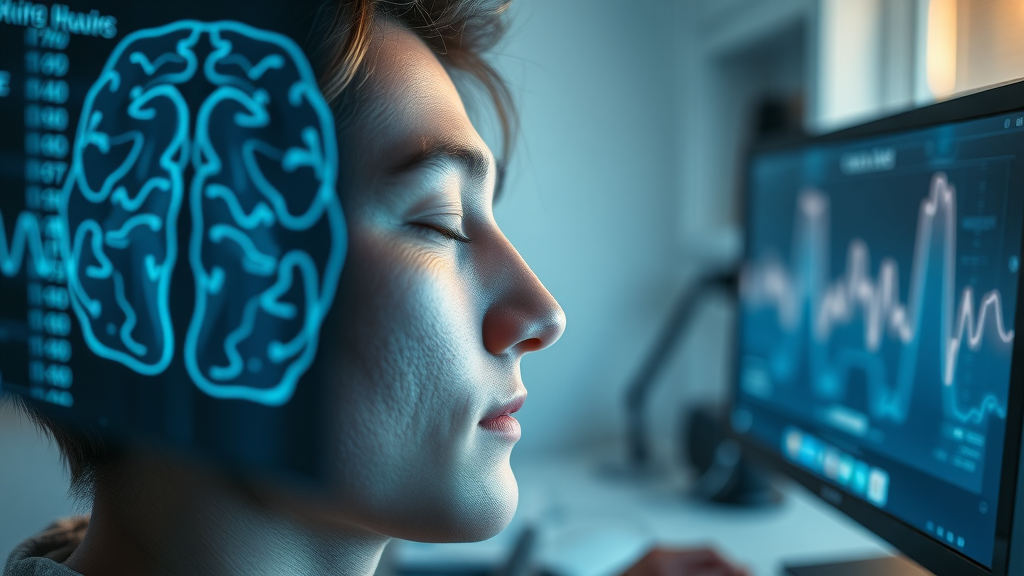
The Brain on Self-Hypnosis at Home: Neurological Insights
When practicing self-hypnosis at home, neuroscientists observe increased activity in the brain’s default mode network—a region associated with introspection and imagination—while also quieting the parts involved in critical self-evaluation. This shift fosters a mental environment where hypnotic suggestion can take root, influencing the formation of new habits, beliefs, or attitudes. For example, in those struggling with a hard time breaking bad habits or negative thought loops, brain scans show that regular self-hypnosis practices can strengthen neural pathways linked to positive change and resilience.
Additionally, the relaxation produced during a hypnosis session reduces the release of stress hormones, which can help relieve symptoms of chronic pain, anxiety, and even aid those who find it difficult to fall asleep at night. Self-hypnosis at home is, therefore, both a scientifically grounded and practical method for personal transformation, as confirmed by many certified hypnotherapists and clinical trials.
Potential Benefits of Self-Hypnosis at Home
Self-Hypnosis at Home for Stress Relief and Relaxation
If life’s pressures give you a hard time shutting down, self-hypnosis at home may be the key to finding a restorative sense of calm. By guiding your thoughts and emotions toward a deeply relaxed state, self-hypnosis techniques decrease stress hormone levels and loosen tense muscles, promoting both mental and physical relaxation. Many people report feeling refreshed, more in control of their mood, and better equipped to handle daily challenges after a self-hypnosis session—all from the comfort of home.
This gentle approach is especially beneficial for those troubled by frequent negative thoughts or chronic stress. As you reinforce positive, calming hypnotic suggestions targeting relaxation, your subconscious mind learns to default to these healthier thought patterns, thereby improving long-term mental health and emotional resilience.
Weight Loss and Behavior Change with Self-Hypnosis at Home
For anyone seeking tools for weight loss or to kick-start healthy habit change, self-hypnosis at home offers an accessible, low-cost strategy. By repeatedly using hypnotic suggestions that support your weight loss and behavior goals, you can address negative thoughts and emotions attached to food, self-image, or willpower. Studies show that people who combine self-hypnosis at home with healthy routines—like mindful eating—are more likely to achieve and maintain weight loss over time.
The process involves visualizing yourself at your goal weight, rehearsing new habits in your mind, or silencing the inner critic who makes weight loss feel impossible. By using your subconscious mind as an ally, self-hypnosis at home helps sustain motivation and overcome obstacles that might derail traditional diet or exercise plans.
Improving Sleep Quality via Self-Hypnosis at Home
Struggling to fall asleep or stay asleep? Self-hypnosis at home is a proven technique to help you unwind before bed and ease into a restful night’s sleep. Through focused breathing and guided hypnotic suggestion, you can reprogram your mind to reduce bedtime anxiety and promote a natural relaxed state ideal for falling asleep. Regular self-hypnosis sessions can help eliminate racing thoughts, insomnia, and the hard time associated with poor sleep hygiene.
Unlike sleep medications, which often bring undesirable side effects, self-hypnosis offers a safe, non-addictive way to improve sleep quality and ensure you wake up feeling truly refreshed and mentally resilient.

Managing Chronic Pain and Discomfort
Thousands use self-hypnosis at home for chronic pain conditions, such as migraines, fibromyalgia, or arthritis. By focusing attention away from pain or discomfort and introducing hypnotic suggestions of relief and healing, the nervous system can modulate pain signals, reducing suffering without reliance on medication. These hypnosis techniques are widely recommended by certified hypnotherapists, especially as part of a comprehensive pain relief plan.
In addition to pain relief, people report improved mental health, better focus and productivity, and higher self-confidence as regular side effects of dedicated self-hypnosis practice.
Mental health
Focus and productivity
Self-confidence
Preparation: Creating the Ideal Environment for Self-Hypnosis at Home
Selecting a Quiet and Comfortable Space
To get the most out of self-hypnosis at home, start by selecting a tranquil, distraction-free spot. Your environment shapes your ability to relax; consider a favorite nook, a dedicated room, or even a cozy corner equipped with soft pillows and blankets. Ideally, minimize noise, dim the lights, and add soothing touches like candles or an essential oil diffuser. This attention to sensory comfort prepares your conscious mind to let go and your subconscious to engage fully in the hypnosis process.
Remember: A welcoming space promotes a deeper hypnotic trance and a greater sense of calm. Experiment with locations and setups to discover what yields the most effective self-hypnosis sessions, as even subtle changes can have significant effects on your experience.
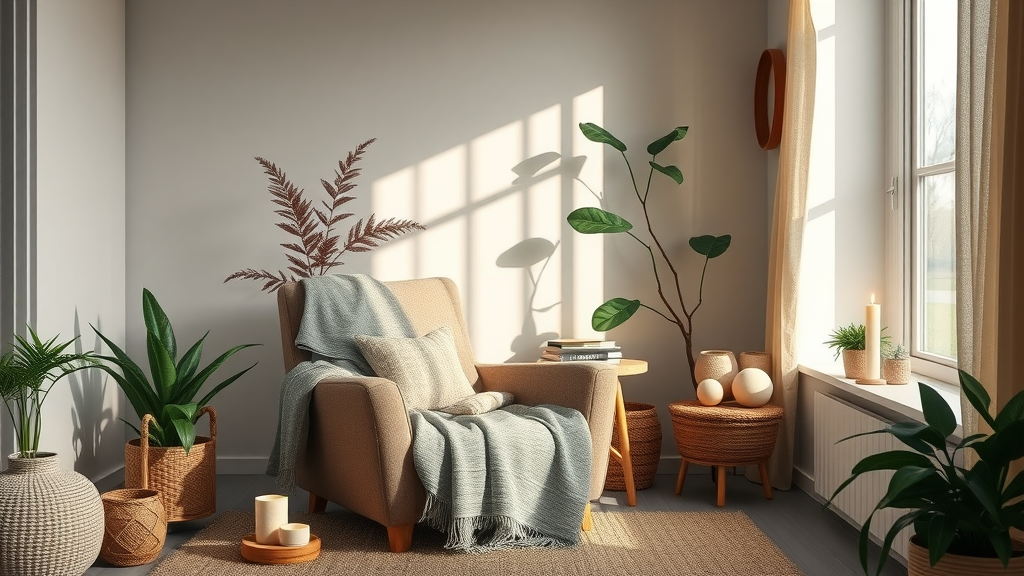
Tools and Resources: Audio Guides, Music, and More
Enhancing your self-hypnosis at home experience often involves using familiar tools and resources: guided audio recordings, soft background music, or hypnosis apps can all help focus your attention and amplify the hypnotic effect. Many certified hypnotherapists offer online resources and customizable scripts, making it easier for beginners to structure their sessions and achieve a hypnotic state quickly. If you have a hard time maintaining focus, choose a trusted hypnosis technique or recording and let it guide you into trance.
Other helpful items include a journal for recording your progress, comfortable clothing, and perhaps a meditation timer to ensure you don’t fall asleep unless that’s your goal. These small investments can make your home hypnosis sessions smoother and more reliable.
Setting Goals and Intentions for Self-Hypnosis at Home
Before starting any self-hypnosis at home, clarify your desired outcome—whether it’s stress relief, weight loss, sleep improvement, or pain relief. Well-defined goals focus your mind and sharpen the hypnotic suggestions you’ll use in session. Take a few minutes to jot down your intentions before each session; over time, this habit will reinforce positive change and help measure your progress.
Remember: The clarity of your goals directly affects your subconscious mind’s ability to implement and sustain change. Many certified hypnotherapists recommend revisiting your intentions regularly to ensure they remain relevant and motivating.
Step-by-Step Instructions: Performing Self-Hypnosis at Home
Step |
Description |
|---|---|
1 |
Setting the scene |
2 |
Progressive muscle relaxation |
3 |
Focused breathing |
4 |
Hypnotic suggestions |
5 |
Closing and reinforcement |
Step 1: Relaxation and Breathwork Techniques
Begin by finding your prepared, comfort-enhanced environment for self-hypnosis at home. Sit or lie down in a relaxed posture. Close your eyes, and take several slow, deep breaths, focusing on the feeling of your chest rising and falling. With each exhale, consciously let go of tension in your body, moving from the crown of your head to the tips of your toes. This breathwork signals your mind that it’s safe to relax, kickstarting the physiological process of entering a hypnotic trance state.
Consider using progressive muscle relaxation: systematically tense and then release each major muscle group, which further helps you enter a relaxed state and primes your mind for hypnotic suggestion. If you notice external thoughts or discomfort, gently redirect your attention back to your breath.

Step 2: Deepening the Trance State
Once your body is relaxed, guide yourself into a deeper hypnotic trance by counting down from ten, visualizing yourself becoming calmer with each number, or imagining descending a staircase toward a peaceful place. With each descent or count, affirm to yourself that you are becoming more open to positive hypnotic suggestion. Your conscious mind starts to recede, allowing the subconscious to come to the forefront during this stage.
Visualization can amplify this effect—picture yourself surrounded by calming imagery, like gentle waves or floating clouds. As you deepen into trance, mental distractions fade, and you enter an optimal state for lasting transformation. Many certified hypnotherapists assert that repetition is key; by practicing this deepening process consistently, you train your brain to enter hypnosis quickly on command.
Step 3: Applying Effective Hypnotic Suggestions
Now, introduce your chosen hypnotic suggestions: these should be specific, positive, and stated in the present tense. For example, “I remain calm even in stressful situations,” or “I am free from unhealthy cravings.” Repeat each suggestion several times, visualizing it deeply or linking it to positive emotions. Your subconscious mind is especially receptive in this hypnotic state, increasing the likelihood your suggestions will take hold and lead to desired changes.
Remember to keep your suggestions clear and focused on achievable goals, layering more complex affirmations as you gain confidence with self-hypnosis at home. This repetition builds new neural pathways, helping you break free from unhelpful thought patterns or negative thoughts and emotions.
Step 4: Reinforcing Outcomes and Returning to Wakefulness
Once you’ve delivered your hypnotic suggestions, spend a minute visualizing the benefits you’ll experience. Then, gently count yourself up from one to five or consciously affirm that you are returning to your usual waking state. As you do this, remind yourself that the positive changes you seek are already forming within your subconscious mind.
Allow yourself a few moments to adjust, then open your eyes and stretch. Each session builds upon the last, reinforcing positive neural circuits and bolstering the lasting benefits of self-hypnosis at home.
Tips from a Certified Hypnotherapist: Maximizing Results from Self-Hypnosis at Home
"Consistency and clarity of intent are key to harnessing the full potential of self-hypnosis at home." — Certified Hypnotherapist
Safety Considerations and When to Seek Professional Guidance
While self-hypnosis at home is safe for most, there are important guidelines for success and well-being. Set realistic expectations: self-hypnosis is a powerful tool but is not a replacement for qualified mental health or medical care, especially for severe health issues. If you notice adverse effects, such as increased anxiety, trouble waking from trance, or resurfacing traumatic memories, pause your sessions and consult a certified hypnotherapist or healthcare professional.
Monitor your progress by journaling after each hypnosis session, and be honest about any challenges or setbacks. Remember, the goal is steady improvement, not perfection. If you begin to struggle with maintaining trance state or feel stuck on negative thoughts and emotions, professional guidance may provide the breakthrough needed for lasting positive change.
Setting realistic expectations
Monitoring progress
Noticing adverse effects
Common Hypnosis Techniques for Self-Hypnosis at Home
Visualization
Visualization is a foundational hypnosis technique for self-hypnosis at home. By mentally picturing a scene associated with relaxation, health, or achieving your goals, you engage the subconscious mind and create emotional associations that reinforce positive change. Imagine yourself succeeding at a difficult task, feeling confident in a challenging situation, or relaxing completely in a peaceful setting—these images work in tandem with hypnotic suggestion to cement new, healthy thought patterns.
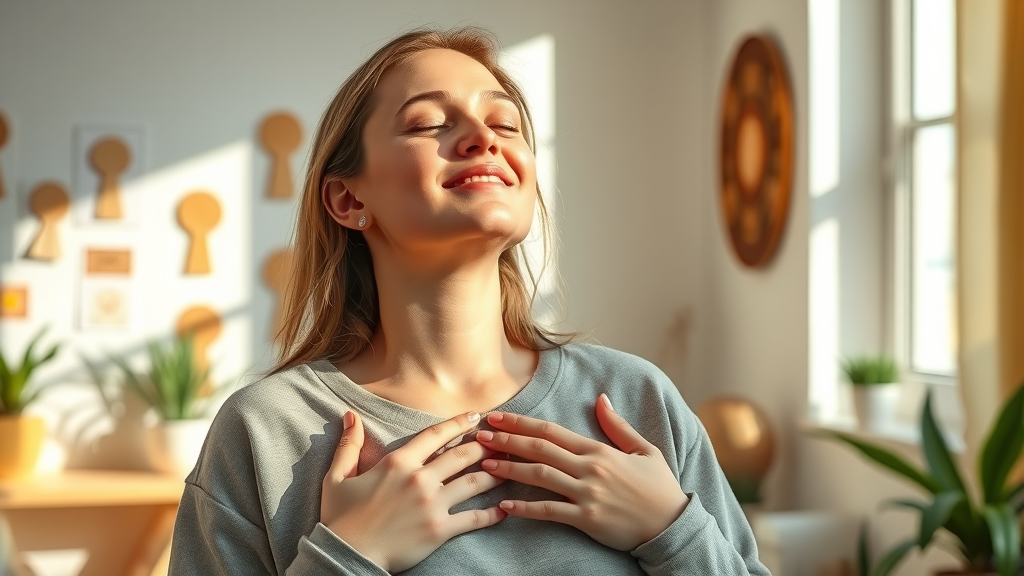
Anchoring Positive Feelings
Anchoring is a hypnosis technique in which you link a specific positive feeling (like confidence or calm) to a physical gesture—such as squeezing a finger and thumb together. Each time you repeat this during self-hypnosis at home, you reinforce the connection, enabling you to invoke positive emotions on command during stressful times in everyday life. Over time, this technique supports emotional resilience and helps silence negative thought patterns quickly outside of hypnosis sessions.
Effective anchoring requires mindful repetition: use the same gesture and focus on the exact feeling you want to summon. This strategy is regularly taught by certified hypnotherapists and is especially useful for people prone to performance anxiety or moments of self-doubt.
Self-Empowering Affirmations
Affirmations are concise, positive statements designed to direct your subconscious mind toward constructive thought and behavior change. In self-hypnosis at home, these might include phrases like, “I am worthy of success,” or “I release the past and embrace the present.” Repeated in a hypnotic state, affirmations bypass resistance from the conscious mind and accelerate the adoption of healthier mental and emotional habits.
Many certified hypnotherapists recommend writing your own affirmations, ensuring they are tailored to your unique goals and challenges. The more personal and believable the statement, the stronger its hypnotic effect during and beyond your hypnosis sessions.
People Also Ask About Self-Hypnosis at Home
Can I learn self-hypnosis on my own?
Absolutely, with the appropriate resources and dedication, learning self-hypnosis at home is accessible to most people. Guided audios, books by certified hypnotherapists, and online tutorials can help structure your practice effectively.
How do I let myself be hypnotized?

Allow yourself to relax deeply in a safe space, focus your attention inward, and use hypnotic suggestions or scripts to guide your subconscious toward your goal.
What are the four steps of self-hypnosis?
They include relaxing the body, focusing attention, introducing hypnotic suggestions, and reinforcing or emerging gently from the trance.
What is the rule 4 in hypnosis?
Rule 4 relates to the importance of belief and expectancy—suggestions work best when the individual fully believes in the process and its outcomes.
Key Takeaways: Essential Insights for Practicing Self-Hypnosis at Home
Self-hypnosis at home offers numerous scientific and practical benefits
Preparation and consistency are critical for success
Personalized hypnotic suggestions boost effectiveness
Frequently Asked Questions About Self-Hypnosis at Home
Is self-hypnosis at home safe?
For most people, yes. Those with serious mental health issues should consult a professional for guidance.How long should each session last?
Most effective hypnosis sessions last between 15 and 30 minutes, but you can tailor this based on your comfort and goals.Can self-hypnosis at home replace professional therapy?
Self-hypnosis is a valuable self-care tool, but it does not replace therapy or medical care for complex health issues.
Ready to Transform Your Life? Start Practicing Self-Hypnosis at Home Today
Uncover your inner potential, harness the power of your mind, and begin your journey toward lasting positive change—right now, right at home. Start your first self-hypnosis session today!
 Add Row
Add Row  Add
Add 

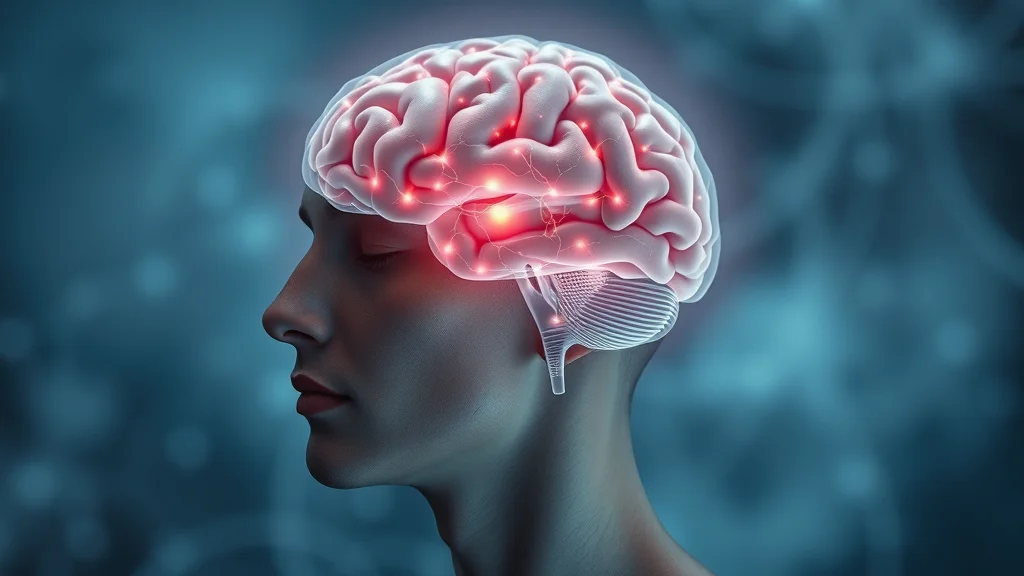


Write A Comment